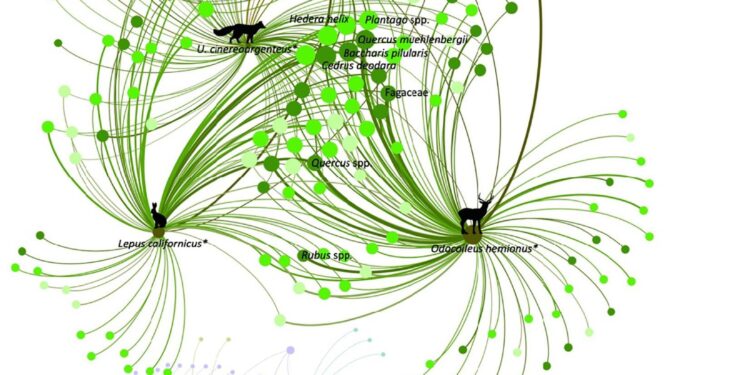In a groundbreaking study published in Nature, researchers have unveiled a novel approach to understanding how information traverses complex ecological networks. By embedding information flows directly within the intertwined relationships of species and their environments, this innovative framework offers fresh insights into ecosystem dynamics and resilience. The findings promise to reshape how scientists predict ecological responses to environmental changes, opening new avenues for conservation and biodiversity management in an increasingly interconnected natural world.
Embedding information flows to enhance ecosystem resilience
Integrating seamless information flows within ecological networks transforms how species and environmental factors interact, fostering a dynamic balance that supports adaptability and recovery. Through the circulation of real-time data-ranging from climatic changes to species behaviors-ecosystems gain a robust communication framework that underpins their capacity to respond to disturbances. This digital intelligence layer empowers conservationists and researchers to identify vulnerabilities before they escalate, allowing timely interventions that preserve biodiversity and ecosystem services.
Key benefits of embedding information flows include:
- Enhanced predictive modeling of ecological shifts
- Improved coordination between fragmented habitats
- Faster detection and containment of invasive species
- Real-time monitoring of ecosystem health metrics
| Information Flow Type | Ecological Impact | Example Application |
|---|---|---|
| Sensor Networks | Continuous environmental monitoring | Tracking temperature and soil moisture |
| Species Movement Data | Understanding migration and habitat use | GPS collars on wildlife |
| Remote Sensing | Landscape change detection | Satellite imagery analysis |
| Community Reporting | Local biodiversity updates | Citizen science apps |
Decoding communication pathways in ecological networks
Understanding how information travels within ecological networks is revolutionizing our grasp of ecosystem dynamics. Recent studies have unveiled that communication among species is not solely dependent on direct interactions but often relies on complex, multi-layered pathways. By embedding these information flows into network models, scientists can capture the hidden channels through which signals, such as chemical cues or behavioral changes, propagate-shedding light on how ecosystems maintain resilience and adapt to disturbances.
Key mechanisms facilitating these intricate communication webs include:
- Trophic cascades: where signals cascade through food chains affecting multiple species indirectly.
- Symbiotic signaling: exchanges between mutualistic partners that coordinate survival strategies.
- Environmental mediation: physical factors like soil and water chemistry transmitting information beyond immediate contacts.
| Communication Pathway | Primary Signal Type | Ecological Role |
|---|---|---|
| Chemical Signaling | Pheromones & Exudates | Coordination of defense mechanisms |
| Behavioral Cues | Movement Patterns | Predator-prey awareness |
| Physical Changes | Soil Nutrient Alteration | Plant-to-plant facilitation |
Strategies for integrating data streams into conservation efforts
Effective conservation hinges on the ability to harness real-time data streams that reveal intricate ecological interactions. By employing advanced sensor networks, conservationists can monitor species movements, environmental changes, and human impacts with unprecedented precision. Integrating these streams into centralized platforms allows decision-makers to visualize dynamic patterns across habitats, enhancing rapid response strategies. Furthermore, combining satellite imagery with ground-level data opens new avenues for detecting early signs of ecosystem imbalance and identifying critical biodiversity hotspots.
Successful initiatives often rely on fostering collaborations between technologists, ecologists, and local communities to tailor data integration frameworks that respect both scientific rigour and socio-cultural contexts. Below is a simplified overview of key integration tactics employed worldwide:
| Strategy | Function | Example |
|---|---|---|
| Multi-source fusion | Aggregates satellite, sensor, and citizen data | Global Forest Watch |
| Automated alerts | Triggers conservation interventions | Smart wildlife corridors |
| Community dashboards | Empowers local stewardship | Rainforest Trust apps |
- Data interoperability: Ensuring systems communicate seamlessly.
- Adaptive algorithms: Dynamic models evolving with new data.
- Open-access policies: Facilitating transparent, collaborative science.
- Capacity building: Training stakeholders in data literacy.
Key Takeaways
As the intricate tapestry of life continues to reveal its hidden connections, embedding information flows within ecological networks marks a pivotal step in understanding nature’s complexity. This emerging perspective not only deepens our grasp of ecosystem dynamics but also opens new avenues for conservation and environmental management. As researchers delve further into these interwoven channels of information, the hope is to unlock strategies that bolster ecosystem resilience in the face of growing global challenges. The story of ecological networks is far from over – and with information flows now in focus, a richer, more interconnected narrative is just beginning to unfold.










